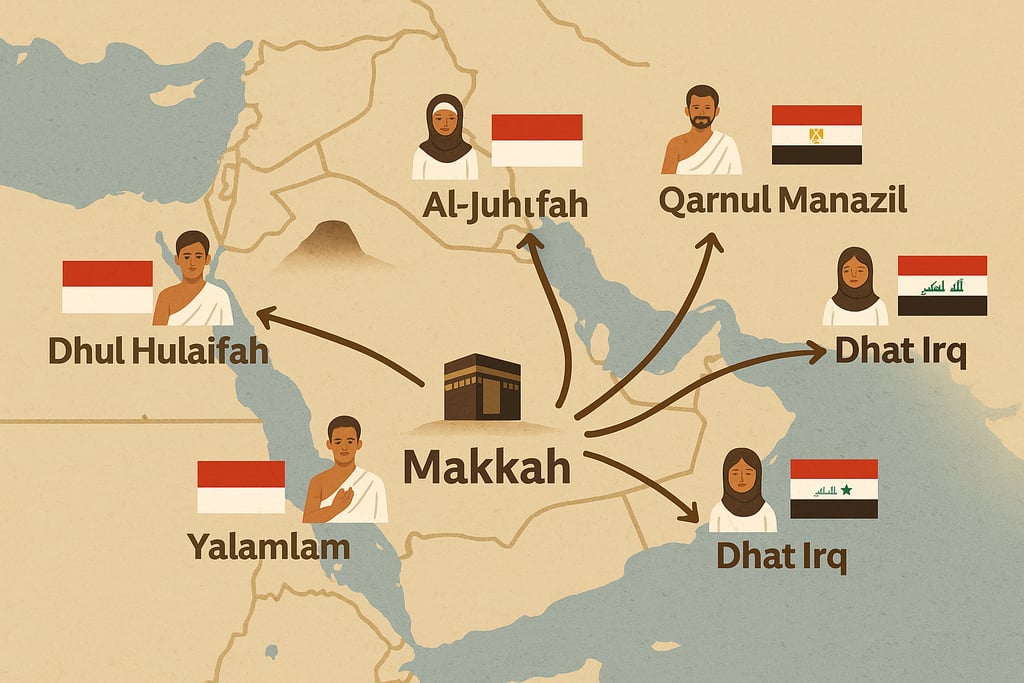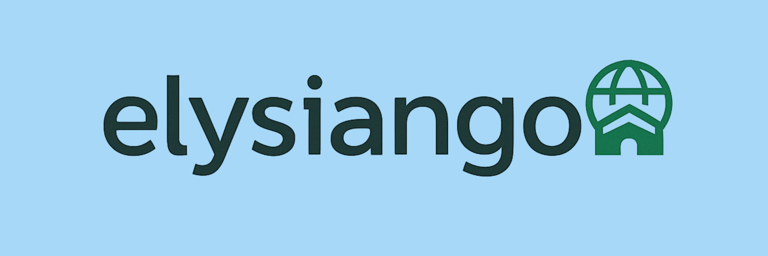📍 Miqat: Locations, Types, and the Intention of Ihram
What is Miqat? In the sacred journey of Hajj and Umrah, Miqat refers to specific boundaries of place and time established by the Prophet Muhammad ﷺ as the starting point of entering into the state of Ihram — the sacred state required for pilgrimage. A pilgrim may not pass beyond the Miqat towards Makkah without first declaring the intention (niyyah) and entering the state of Ihram. This boundary symbolizes both a physical and spiritual preparation, marking the transition from the ordinary to the sacred.
ElysianGo
9/23/20252 min read


🕋 What Is Miqat?
In the pilgrimage of Hajj and Umrah, Miqat refers to specific boundaries of time and place established by the Prophet Muhammad ﷺ.
Every pilgrim must make their intention (niyyah) and enter the state of Ihram before crossing these boundaries on their way to Makkah.
🕰️ Types of Miqat
1. Miqāt Zamani (Time Boundary)
This refers to the periods of time within which Ihram can be performed.
For Hajj, the time begins from the month of Shawwal until the 10th of Dhul Hijjah.
For Umrah, Ihram can be performed at any time throughout the year.
2. Miqāt Makāni (Place Boundary)
These are the geographical points where a pilgrim must enter the state of Ihram before proceeding to Makkah.
Each Miqat corresponds to pilgrims coming from different directions:
Dhul Hulaifah (Abyar Ali): for those coming from Madinah.
Al-Juhfah: for pilgrims arriving from Syria, Egypt, or North Africa.
Qarnul Manazil: for those coming from Najd or the eastern regions.
Dhat Irq: for pilgrims from Iraq or Persia.
Yalamlam: for those traveling from Yemen or the southern regions.
⚠️ Note: Anyone who passes beyond the Miqat without first entering Ihram must offer a dam (sacrificial penalty).
🤍 How to Make the Intention (Niyyah) at Miqat
1. Perform Ghusl (Purification Bath)
Begin by cleansing yourself through ghusl, trimming nails, and wearing perfume (for men only).
2. Wear the Ihram Garments
Men wear two unstitched white cloths; women wear modest attire that fulfills Islamic guidelines.
3. Pray Two Rak‘ahs of Sunnah Prayer for Ihram
It’s recommended to pray two voluntary rak‘ahs before making the intention.
4. Recite the Intention (Niyyah)
Say the following according to your purpose:
For Umrah:
“Labbaik Allahumma ‘Umrah.”
(“O Allah, I respond to Your call to perform Umrah.”)For Hajj:
“Labbaik Allahumma Hajj.”
(“O Allah, I respond to Your call to perform Hajj.”)For Both (Hajj & Umrah together):
“Labbaik Allahumma Hajj wa ‘Umrah.”
(“O Allah, I respond to Your call to perform both Hajj and Umrah.”)
5. Recite the Talbiyah
After your intention, say:
“Labbaik Allahumma labbaik, labbaika la sharīka laka labbaik.
Innal-hamda wan-ni‘mata laka wal-mulk, la sharīka lak.”
(“Here I am, O Allah, here I am. Here I am—You have no partner. Truly, all praise, blessings, and sovereignty belong to You. You have no partner.”)
❓ Frequently Asked Questions
🟧 What if someone crosses the Miqat without entering Ihram?
A pilgrim who passes the Miqat without first entering Ihram must return to the Miqat and make the intention.
If unable to return, they must offer a dam (sacrificial penalty) as compensation.
🟨 Can I make my intention from home?
If you are departing from far away (for example, via airplane), you may prepare your Ihram from home,
but the actual niyyah should be made when approaching or reaching the Miqat zone.
🌙 Conclusion
The Miqat is more than a geographical boundary — it is a spiritual gateway.
Crossing it reminds each pilgrim to leave behind worldly concerns and enter into a state of purity, humility, and devotion.
With every intention made, the heart begins its journey — not just to Makkah, but towards Allah.
“Every step toward the House of Allah is also a step toward the peace within your soul.”
ElysianGo Baitullah
ABOUT ELYSIANGO
PARTNERSHIP & AFFILIATES
TRUST & COMMUNITY
© 2025 ElysianGo Baitullah. All rights reserved.
TRAVEL PACKAGES
PILGRIM GUIDES
LANGUAGE OPTIONS
FOLLOW US
Global Umrah-Hajj Ecosystem – Trusted, Guided, Blessed.


Stay inspired and connected with ElysianGo:
